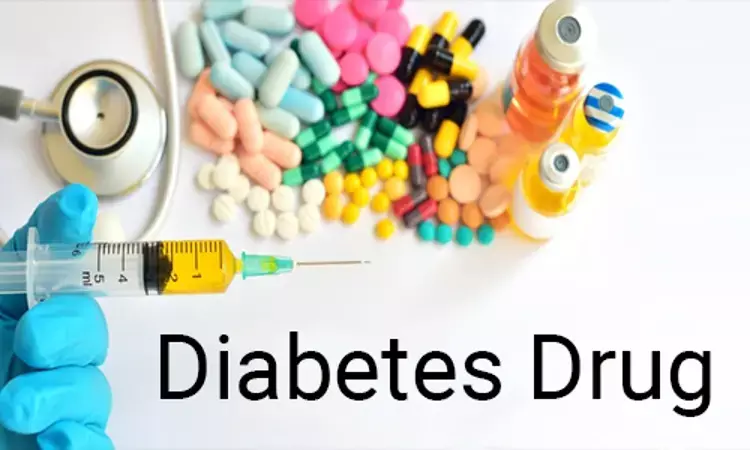- Home
- Medical news & Guidelines
- Anesthesiology
- Cardiology and CTVS
- Critical Care
- Dentistry
- Dermatology
- Diabetes and Endocrinology
- ENT
- Gastroenterology
- Medicine
- Nephrology
- Neurology
- Obstretics-Gynaecology
- Oncology
- Ophthalmology
- Orthopaedics
- Pediatrics-Neonatology
- Psychiatry
- Pulmonology
- Radiology
- Surgery
- Urology
- Laboratory Medicine
- Diet
- Nursing
- Paramedical
- Physiotherapy
- Health news
- Fact Check
- Bone Health Fact Check
- Brain Health Fact Check
- Cancer Related Fact Check
- Child Care Fact Check
- Dental and oral health fact check
- Diabetes and metabolic health fact check
- Diet and Nutrition Fact Check
- Eye and ENT Care Fact Check
- Fitness fact check
- Gut health fact check
- Heart health fact check
- Kidney health fact check
- Medical education fact check
- Men's health fact check
- Respiratory fact check
- Skin and hair care fact check
- Vaccine and Immunization fact check
- Women's health fact check
- AYUSH
- State News
- Andaman and Nicobar Islands
- Andhra Pradesh
- Arunachal Pradesh
- Assam
- Bihar
- Chandigarh
- Chattisgarh
- Dadra and Nagar Haveli
- Daman and Diu
- Delhi
- Goa
- Gujarat
- Haryana
- Himachal Pradesh
- Jammu & Kashmir
- Jharkhand
- Karnataka
- Kerala
- Ladakh
- Lakshadweep
- Madhya Pradesh
- Maharashtra
- Manipur
- Meghalaya
- Mizoram
- Nagaland
- Odisha
- Puducherry
- Punjab
- Rajasthan
- Sikkim
- Tamil Nadu
- Telangana
- Tripura
- Uttar Pradesh
- Uttrakhand
- West Bengal
- Medical Education
- Industry
Lixisenatide lowers postprandial blood sugar spikes in diabetics after pancreatectomy

Lixisenatide, a glucagon-like peptide 1 receptor agonist (GLP-1agonist) effectively reduces postprandial blood sugar excursions in totally pancreatectomised patients; finds a new study.
Treatment of diabetes after total pancreatectomy is a challenging task. The only treatment option for reducing the blood sugar levels in these patients is insulin. The authors hypothesised in this study that lixisenatide would improve postprandial glucose tolerance in totally pancreatectomised patients.
The study has been published in the journal Diabetologia, 2020.
The researchers conducted a randomised, double blind, cross over study. A total of 24 patients were included in the trial of which 12 patients were totally pancreatectomised and 12 were healthy controls. the pancreatectomised patients were at a mean (+SD) age of 65.0 ± 9.5yrs and BMI of 22.9 ± 3.9 kg/m2. . the controls were of 66.1 ± 7.6 years; BMI: 24.0 ± 2.9 kg/m2 . the participants underwent two 3 h liquid mixed-meal tests after single-dose injection of 20 μg of lixisenatide or placebo. Basal insulin was given the night before each experimental day. no insulin was given during study days. Paracetamol was given for the assessment of gastric emptying.
From the trial the researchers found the following:
• In the pancreatectomy group baseline-subtracted AUC [bsAUC] was 548 ± 125 vs 1447 ± 95 mmol/l × min (mean±SEM).
• In the control group bsAUC was -126 ± 12 vs 222 ± 51 mmol/l × min
• In the pancreatectomy group a mean peak glucose concentration of 23.3 ± 1.0 mmol/l was reached at time point 134 ± 11 min with placebo whereas with lixisenatide the mean peak glucose concentration of 18 ± 1.4 mmol/l at time point 148 ± 13 min was seen.
• In the control group a mean peak concentration of 8.2 ± 0.4 mmol/l was reached at time point 70 ± 13 min with placebo compared with a mean peak concentration of 5.5 ± 0.1 mmol/l at time point 8 ± 25 min with lixisenatide.
• Lixisenatide also reduced gastric emptying and postprandial glucagon responses in the pancreatectomy group (66 ± 84 vs 1190 ± 311 pmol/l × min and in the control group (141 ± 100 vs 190 ± 100 pmol/l × min.
• In the pancreatectomy group, C-peptide was undetectable in plasma and in the control group, postprandial plasma C-peptide responses were reduced with lixisenatide.
Lixisenatide use was associated with reduced gastric emptying and postprandial glucagon responses in both groups.
The researchers concluded that the GLP-1 receptor agonist lixisenatide reduces postprandial blood sugar excursions in totally pancreatectomised patients. They also interpreted that the mode of action seems to involve deceleration of gastric emptying and reduced postprandial responses of gut-derived glucagon.
To read the full Article, Click the following link: 10.1007/s00125-020-05158-9
BDS, MDS
Dr.Niharika Harsha B (BDS,MDS) completed her BDS from Govt Dental College, Hyderabad and MDS from Dr.NTR University of health sciences(Now Kaloji Rao University). She has 4 years of private dental practice and worked for 2 years as Consultant Oral Radiologist at a Dental Imaging Centre in Hyderabad. She worked as Research Assistant and scientific writer in the development of Oral Anti cancer screening device with her seniors. She has a deep intriguing wish in writing highly engaging, captivating and informative medical content for a wider audience. She can be contacted at editorial@medicaldialogues.in.
Dr Kamal Kant Kohli-MBBS, DTCD- a chest specialist with more than 30 years of practice and a flair for writing clinical articles, Dr Kamal Kant Kohli joined Medical Dialogues as a Chief Editor of Medical News. Besides writing articles, as an editor, he proofreads and verifies all the medical content published on Medical Dialogues including those coming from journals, studies,medical conferences,guidelines etc. Email: drkohli@medicaldialogues.in. Contact no. 011-43720751


